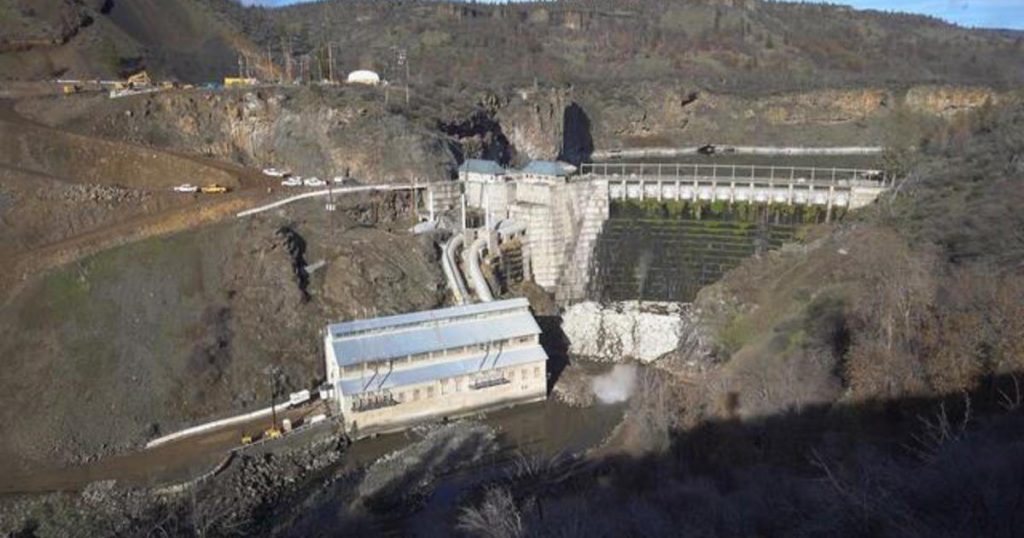The largest dam removal project in U.S. history is taking place on the Klamath River, which flows from southern Oregon to the Pacific Ocean. This project is part of an effort to help revive America’s salmon population, which has been declining in recent years. Last year, the Pacific salmon season was canceled due to low numbers of fish making their way up the river to spawn. The removal of the dams will allow for better fish passage and access to historical spawning grounds, which is crucial for the survival and recovery of the salmon population.
The Klamath River has faced numerous issues in recent years, including water pollution, habitat destruction, and low water levels due to dam construction. These factors have all contributed to the decline in salmon populations in the region. By removing the dams, experts hope to restore a more natural flow to the river and improve water quality, which will in turn benefit the salmon population. The project is a collaborative effort between government agencies, tribal groups, conservation organizations, and other stakeholders who are working together to ensure the success of the restoration efforts.
The removal of the dams on the Klamath River is a significant undertaking that requires careful planning and coordination to ensure its success. The project involves the gradual removal of four dams over a period of several years, with the goal of fully restoring the river to its natural state. The removal of the dams will also have positive environmental impacts beyond just the salmon population, including the restoration of habitat for other fish and wildlife species that rely on the river for their survival.
The Klamath River restoration project is part of a larger effort to address the environmental challenges facing rivers and waterways across the United States. Dams have long been a source of controversy due to their impact on fish populations, water quality, and other ecological factors. By removing these structures, experts hope to create a more sustainable and resilient ecosystem that benefits both wildlife and local communities. The success of the project will depend on the ongoing support and collaboration of all stakeholders involved.
The removal of the dams on the Klamath River represents a significant step forward in the effort to restore and protect America’s rivers and waterways. By allowing for better fish passage and access to historical spawning grounds, experts hope to see a revival in the salmon population and a healthier, more vibrant ecosystem overall. The project serves as a model for future restoration efforts and demonstrates the power of collaboration and cooperation in addressing complex environmental challenges. With continued support and commitment, the restoration of the Klamath River has the potential to have far-reaching benefits for both wildlife and local communities.
In conclusion, the largest dam removal project in U.S. history on the Klamath River is a crucial step in the effort to revive America’s salmon population and restore the health of the region’s waterways. By collaborating with government agencies, tribal groups, and other stakeholders, experts are working together to ensure the success of the restoration efforts. The removal of the dams will have positive environmental impacts beyond just the salmon population, benefiting other fish and wildlife species that rely on the river. This project serves as a model for future restoration efforts and highlights the importance of working together to address complex environmental challenges for the benefit of all.















